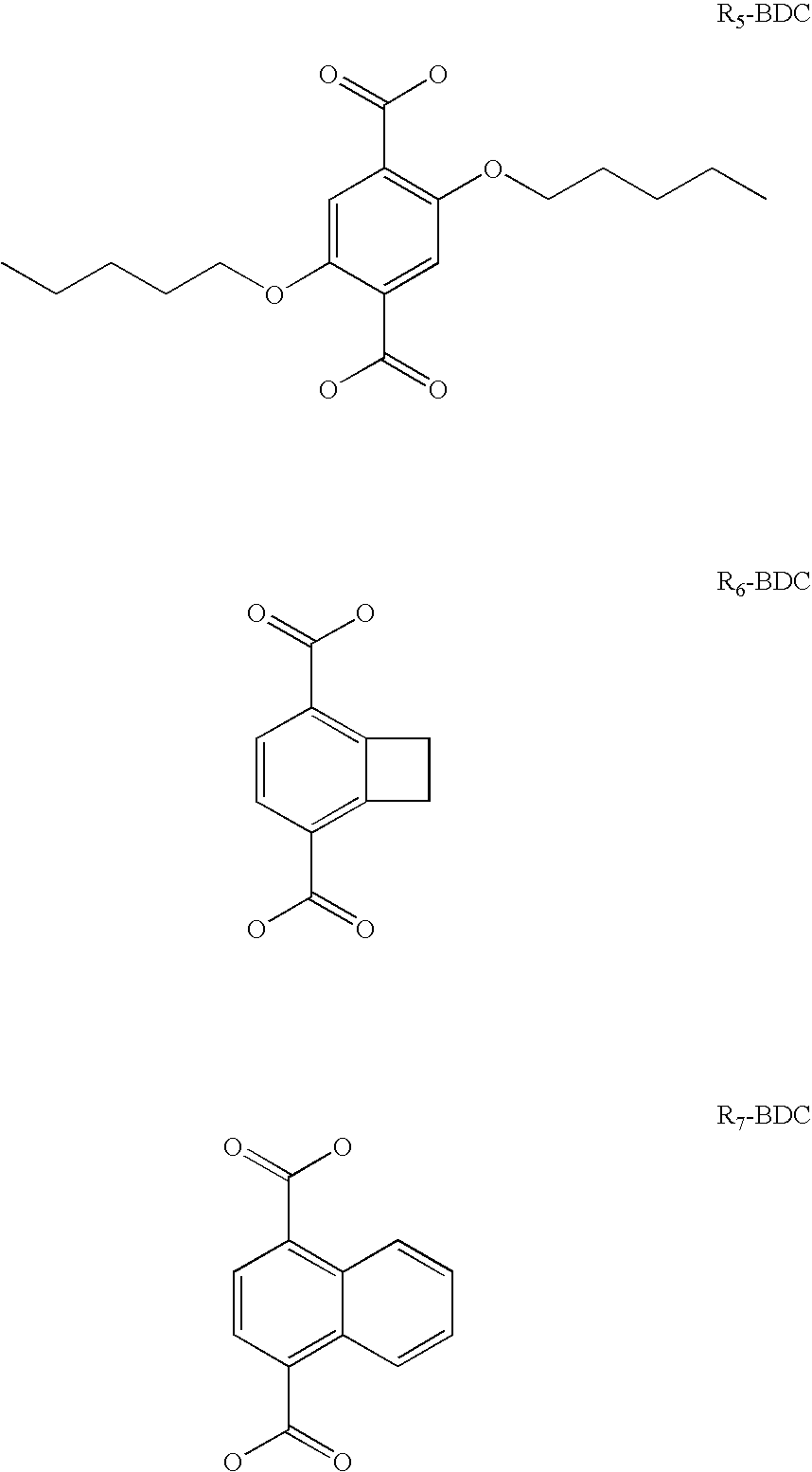Metal organic framework-polymer mixed matrix membranes
a technology of mixed matrix membrane and organic framework, which is applied in the direction of separation process, filtration separation, dispersed particle separation, etc., can solve the problems of unsatisfactory commercialization attractiveness of polymers, the tradeoff between productivity and selectivity seems to have reached the limit of current polymeric membrane materials, and the polymer does not have outstanding permeabilities. , to achieve the effect of reducing the problem of hydrocarbon fouling, and large the pore siz
- Summary
- Abstract
- Description
- Claims
- Application Information
AI Technical Summary
Benefits of technology
Problems solved by technology
Method used
Image
Examples
Embodiment Construction
[0008]A new family of MMMs containing particular types of microporous solid materials as fillers has now been developed that retains its polymer processability with improved selectivity for gas separation due to the superior molecular sieving and sorption properties of the microporous materials. The fillers used herein are MOFs and related structures.
[0009]More particularly, the present invention pertains to MOF-polymer MMMs (or MOF-polymer mixed matrix films) containing high surface area MOF materials as fillers. These new MMMs have application for the separation of a variety of gas mixtures. One such separation that has significant commercial importance is the removal of carbon dioxide from natural gas. MMMs permit carbon dioxide to diffuse through such membranes at a faster rate than methane. Carbon dioxide has a higher permeation rate than methane because of higher solubility in the membrane, higher diffusivity, or both. Thus, the concentration of carbon dioxide enriches on the ...
PUM
| Property | Measurement | Unit |
|---|---|---|
| size | aaaaa | aaaaa |
| temperature | aaaaa | aaaaa |
| thick | aaaaa | aaaaa |
Abstract
Description
Claims
Application Information
 Login to View More
Login to View More - R&D
- Intellectual Property
- Life Sciences
- Materials
- Tech Scout
- Unparalleled Data Quality
- Higher Quality Content
- 60% Fewer Hallucinations
Browse by: Latest US Patents, China's latest patents, Technical Efficacy Thesaurus, Application Domain, Technology Topic, Popular Technical Reports.
© 2025 PatSnap. All rights reserved.Legal|Privacy policy|Modern Slavery Act Transparency Statement|Sitemap|About US| Contact US: help@patsnap.com



